lake wobegon effect
description: cognitive bias wherein a person overestimates their own qualities and abilities
27 results
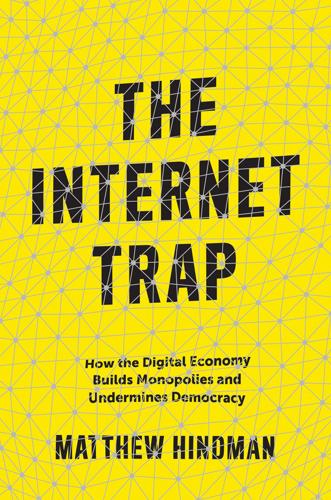
The Internet Trap: How the Digital Economy Builds Monopolies and Undermines Democracy
by
Matthew Hindman
Published 24 Sep 2018
Even within the same market, it is common to find television station sites or newspaper sites spread across several different categories and groupings. This initially puzzling result likely stems from comScore’s subscriber model. Media organizations that subscribe to comScore get to choose the category or subcategory in which their site is placed. This can result in a “Lake Wobegon effect,” in which subscribing media organizations each choose the category or subcategory that looks most favorable. Most subscribing news organization thus get to say that they are at the top of their chosen category. Since it is essential that we know the affiliation (if any) between online news sources and traditional media outlets, the comScore data need to be supplemented.
…
., 34 journalism: attention economy and, 7, 10–13; best hope for, 160–61; Columbia Journalism Review and, 119, 148; cooperation and, 158–59; economic geography and, 78, 81; • 231 editors and, 29, 42, 48, 53, 70, 102–3, 132, 135, 149, 152, 155–61; government subsidies for, 133, 137, 140–42; hamster wheel, 148; headlines and, 13, 32, 36, 38, 107, 147, 149–50, 154–57, 160–61; hyperlocal sites and, 103–4, 119, 121, 130–37; Institute for Interactive Journalism and, 121; local, 104–5, 107, 118–21, 129–30; myth of monetization and, 134–35, 140, 145; nature of internet and, 179; nonprofit, 118, 133, 137, 140–42, 146, 160; personalization and, 39–40, 56; philanthropy and, 133, 137, 140–42; postindustrial, 179; profit and, 132–33; Project for Excellence in Journalism and, 107, 121; recommendation systems and, 40; reporters and, 10, 78, 132, 135, 145, 149–50, 156–61; Reynolds Journalism Institute and, 119; shortened articles and, 149; stickiness and, 132–37, 140–48, 152, 154, 157, 159–61; tilted playing field and, 35; traffic and, 101; unions and, 141 Karpf, David, 169 Kidder, Tracy, 82 Kimport, Katrina, 169 K-nearest neighbor algorithm, 44–45, 54 Knight Foundation, 159 Kogan, Aleksandr, 58–59 Kohavi, Ron, 28, 153 Koren, Yehuda, 44–49, 51, 196n15 Kosinski, Mikal, 59 Kovach, Bill, 160 Krugman, Paul, 6, 62–63, 80 Lake Wobegon effect, 187 Lank, Edward, 31–32 leakage, 88–89, 90, 92 legal issues: antitrust laws and, 42, 170, 172–75, 199n15; Campus Network and, 35; Congress and, 104, 141–42; courts and, 6, 129, 148; intellectual property and, 8; licenses and, 7, 30; Netflix Prize and, 47, 49; net neutrality and, 64, 84, 131, 170–72, 175; patents and, 16; Prometheus v.
…
ACLU and, 6; Sherman Antitrust Act and, 175; surveillance and, 176–77 liberals, 32, 72 licenses, 7, 30 232 • Index limited resources, 165–66 LinkedIn, 26 Lippmann, Walter, 132 LittleThings, 151 lock-in, 34–37, 61, 101, 173 logarithms, 88–96, 97, 100, 184–86, 200n21 Lohse, Gerald, 34 long tails, 8, 70, 84, 184, 199n15 Los Angeles, 78, 112, 127, 141 machine learning, 21, 23, 40, 44, 51, 56, 176, 194n24 Malthus, Thomas, 166 manufacturing, 79, 81–82, 202n4 MapReduce, 21, 23 maps, 2, 105 Marketplace of Attention, The (Webster), 5 markets: advertising and, 3–4 (see also advertising); African American, 123–25, 126, 191; attention economy and, 3, 5, 8–11; auctions and, 3, 42, 86, 101; audience reach and, 87, 104, 106–11, 114–18, 121, 129, 134, 169, 186–89; Bing and, 3, 30–31, 195, 195n63; branding and, 28–32, 36, 86, 166; bundling and, 65–67, 76–77, 197n8, 198n10, 198n14; capitalism and, 20, 85, 162, 176; competition and, 35–36 (see also competition); concentration and, 9, 30, 68, 78, 85–88, 99–100, 104, 114–15, 122, 127–30, 171, 184, 199n15; customers and, 17, 24, 30, 33, 50, 57, 68, 149, 164, 172, 174; dispersion and, 6, 42, 100, 200n23; distribution costs and, 12–13, 155, 167–69, 179; eBay and, 3, 26, 39, 42, 86–87, 175; economic geography and, 63–68, 74–78; equilibrium and, 76, 156, 183; experience goods and, 29–30; Federal Trade Commission (FTC) and, 49, 129, 173–74; Google and, 3, 24, 30–31, 173, 195, 195n63; Hispanic, 123–27, 191; international trade and, 5, 62, 80; investment and, 4 (see also investment); lock-in and, 34–37, 61, 101, 173; long tails and, 8, 70, 84, 184, 199n15; methodology and, 182–92; monopolies and, 13, 17, 41, 68, 75, 78, 131, 171–75, 183; nature of internet and, 166–67, 171, 173–75, 178, 203n28; news and, 103–31, 143, 155; niche, 13, 32, 36, 42, 64, 73, 77, 81, 101, 104, 114, 165–66, 170, 174, 180, 193n5; page views and, 24, 87, 106, 108–18, 121, 125–29, 151, 157, 160–61, 188–89, 200n18; personalization and, 41–42, 60; power laws and, 83, 86, 89, 93, 95–96, 184–85; search costs and, 41–42; search engines and, 30–31 (see also search engines); speed and, 1–2, 21–25, 30, 54, 81–82, 147–48, 166–67, 170, 190; stock, 9, 85–88, 92, 95, 100, 185, 199n15; tilted playing field and, 20, 24, 28–37, 195n63; traffic and, 84–90, 94, 95–100, 199n15, 200n18; weights for, 95–96 Marshall, Alfred, 62 Marshall, Josh, 146 Mashable, 145 Mattila, Anna, 31 Mayer, Marissa, 24 Mayr, Ernst, 203n9 McLellan, Michelle, 119 Menchen-Trevino, Ericka, 31 Metcalfe’s Law, 18 methodology: advertising and, 181–84; audience reach and, 184–92; blogs and, 189; concentration and, 184; consumers and, 181–84; digital audience dynamics and, 184–86; diversity and, 189, 191; investment and, 183; Lake Wobegon effect and, 187; local digital news outlets and, 186–92; markets and, 182–92; models and, 181–85, 187, 190–91; newspapers and, 187, 190–91; page views and, 188–89; parsimony and, 185; profit and, 182–83; quality and, 181–83; rankings and, 186; regression analysis and, 46, 122–28, 185, 190–92, 200n23; revenue and, 181–83; search costs and, 181–82; subscriptions and, 181, 187, 190; television and, 187–88, 190–91; traffic and, 181–85, 188 Meyer, Philip, 68 Mic, 145 Microsoft: antitrust and, 173, 175; attention economy and, 3, 9; Bing and, 3 (see also Bing); economic geography and, 65–66; Edge Internet and, 24; Encarta and, 169–70; Excel and, 65, 66 ; Gates and, 203n23; nature of internet and, 168, 170, 173–75, 203n23; news and, 153; personalization and, 51, 53; PowerPoint and, 65, 66 ; speed and, 24; tilted playing field and, 15, 20, 22, 24, 26–33, 195n63; Windows Phone and, 174; Word and, 33, 65, 66 Index Mitchelstein, Eugenia, 70–71 mobile devices: audience reach and, 2–4, 13, 39, 69, 109, 137, 142–44, 147, 152, 160, 165, 167, 170, 179; news and, 109, 137, 142–44, 147, 152, 160; smartphones, 2, 142–44, 165; tablets, 3, 39, 137, 142–44, 152, 165 models: advertising and, 181–84; aggregation and, 65–67, 76–77; algorithms and, 45 (see also algorithms); attention economy and, 5–13; better, 8–10; binomial, 122–23, 125, 125, 200n23; Box aphorism and, 64; bundling and, 65–67, 76–77, 197n8, 198n10, 198n14; classic, 64; consumption, 181–83; Darwinism and, 13, 136, 165–67, 169, 203n9; digital audience dynamics and, 184–86; digital content production and, 71–80; economic geography and, 63–65, 69–81, 198n27, 198n41; evolutionary, 13, 36, 60, 136–37, 148, 162, 164–73, 176–77, 180; increasing returns, 36–37, 63–64, 80–81, 181, 184; Krugman, 62–63, 80; Lake Wobegon effect and, 187; latent-factor, 45, 51–52; linear, 44, 51; local digital news outlets and, 186–92; media preferences and, 69–71; methodology and, 181–85, 187, 190–91; nature of internet and, 164–67, 170–72, 176–77, 180; nearest-neighbor, 44–45, 51, 54; news and, 103–4, 118, 122–28, 133, 135, 146, 148, 155, 200n23; personalization and, 40, 43–59; Poisson, 200n23; principle component analysis, 46; program choice, 198n27; regression, 46, 122–28, 185, 190–92, 200n23; Restricted Boltzmannn Machine, 46; revenue and, 181–84; ridge regression, 46; statistical, 44 (see also statistics); stochastical dynamical systems (SDS) and, 85, 185; tilted playing field and, 22, 25; traffic and, 82–84, 95, 99–100, 181–84, 199n15 monopolies: antitrust laws and, 42, 170, 172–75, 199n15; duopolies and, 4, 30, 42, 68, 180; economic geography and, 13, 17, 41, 68, 75, 78, 131, 171–75, 175, 183; tilted playing field and, 17.

The Broken Ladder
by
Keith Payne
Published 8 May 2017
Are you a good driver? Deep down, you know that you are better than the average person in all these respects. In fact, the majority of people know deep down that they are better than average at most things. Which, as far as anyone can tell, is not strictly possible. This finding is called the Lake Wobegon effect, after Garrison Keillor’s fictional town “where all the women are strong, all the men are good-looking, and all the children are above average.” The effect was stumbled upon in a 1965 study of accident survivors. Researchers spent six months interviewing all of the patients admitted to a Seattle hospital for injuries sustained in vehicle accidents.
…
The only category in which they did not consider themselves above average was “law abiding.” Here, they rated themselves as average. Considering that they were behind bars at the time they made that judgment, it seems to lack a certain objectivity. Over the years, hundreds of studies have replicated the Lake Wobegon effect. The studies show that most of us believe we are above average in intelligence, persistence, conscientiousness, badminton, and just about any other positive quality. The more we value the trait, the more we overrate ourselves with respect to it. My favorite study in this genre is one in which my fellow college professors were asked to rate their teaching abilities compared with those of their colleagues.
…
Ickovics, “Relationship of Subjective and Objective Social Status with Psychological and Physiological Functioning: Preliminary Data in Healthy, White Women,” Health Psychology 19 (2009): 586–92. If you place yourself on a lower rung: The health correlates of subjective status are described in more detail in Chapter 5. Decision making is discussed in Chapter 3; work performance is discussed in Chapter 8; and conspiracy theories and other beliefs in Chapter 4. Lake Wobegon effect: M. D. Alicke and O. Govorun, “The Better-Than-Average Effect,” in The Self in Social Judgment, M. D. Alicke, D. A. Dunning, and J. I. Kreuger (eds.) (New York: Psychology Press, 2005). 1965 study of accident survivors: C. E. Preston and S. Harris, “Psychology of Drivers in Traffic Accidents,” Journal of Applied Psychology 49 (1965): 284–88.
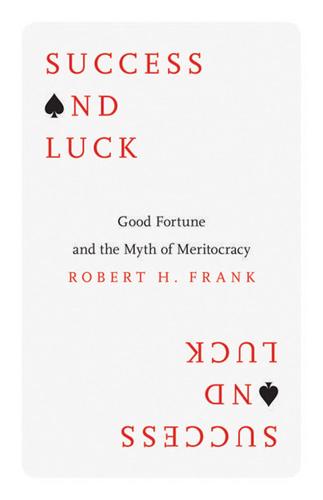
Success and Luck: Good Fortune and the Myth of Meritocracy
by
Robert H. Frank
Published 31 Mar 2016
Almost 70 percent of the faculty surveyed at one university believed themselves to be in the top 25 percent of their colleagues with respect to teaching ability.3 And another survey found that 87 percent of students in an elite MBA program believed their academic performance placed them in the top half of their class.4 This pattern has been called the Lake Wobegon Effect, after Garrison Keillor’s mythical Minnesota small town where “all the children are above average.” The pattern is typically more pronounced for traits or characteristics that are difficult to measure objectively, such as driving ability. Only 2 percent of high school students in one survey said they had below-average leadership ability, and virtually all rated themselves as better than average at getting along with others.5 False beliefs about luck are also common.
…
., 27 gratitude, 98–103 Great Recession, the, 124, 134 Gross, Terry, 5 H&R Block, 43 Harvard University, 34, 36, 48, 72, 136 headwinds, 63, 64, 80, 81 height, 8 Hewlett-Packard, 53 High School Baseball Web, 62 high-speed rail, 87 hindsight bias, 21 Homo economicus, 129 hostile takeover litigation, 36 human capital, 40, 66 Huo, Yuezhou, 95 Huxley, Aldous, vii IBM, 34, 35, 51 Ice King, 37 income inequality, 52–55, 112, 113; and bankruptcy rates, 114, 115; and divorce rates, 114, 115; and government stimulus policy, 162, 163; and hours worked, 115; and long commute times, 114, 115; and spending by the wealthy, 165 individual vs. collective incentives, 17, 110, 117, 169 infrastructure, 12, 18, 87, 90, 91, 98, 111, 119, 120, 124, 147, 162 jealousy, 122 Johnson, Harold, 134–41 Journal of Political Economy, 28 JVC, 44 Kahneman, Daniel, 28, 70 Kardashian, Kim, 9 keeping up with the Joneses, 112 Keillor, Garrison, 72 Kildall, Gary, 34–36 Koble, Amy, 102 Koufax, Sandy, 142 Kristof, Nicholas, xiv, xv Krueger, Alan, 8 LaBelle, Patti, 103 Lake Wobegon Effect, 72 Landier, Augustin, 50 Langone, Kenneth, 104 last-name effects, 39 Lazarsfeld, Paul, 21 Leonard, Elmore, 5 Leslie, Ian, 22 Lewis, Michael, xii, xiii, xv, xvi Liar’s Poker, xiii liberals, xi, 17, 83 Little League baseball, 142 Lockdown, 30 Locke, John, 96 Lokkins, Elmer, 106 London School of Economics, 4 Long Tail, The, 47 lost-envelope thought experiment, 130 lottery winners, 69, 72 Louvre, the, 22 Major League Baseball, 62, 141 Manove, Michael, 74 markets for classical music, 46, 47 Marshall, Alfred, 41 Martin, Brett, 31 material living standards, 14, 90 Matthew Effect, 24 Mauboussin, Michael, 69 McCullough, Michael, 102 Mechanical Turk, 95, 137 meritocracy, xi, xii Merton, Robert K., 24 Mialon, Hugo, 14 Microsoft, 34, 35, 44 Milanovic, Branko, 7 Mlodinow, Leonard, 35 Mona Lisa, 9, 22–23 Morocco, 87 motivated cognition, 72 MS DOS, 35 Munger, Charlie, 39 Murphy, Liam, 97 Music Lab, 30, 45 Nagel, Thomas, 97 naïve optimism, 11, 12, 70–72, 75 National Center for Education Statistics, 87 National Institutes of Health, 135 natural selection, 73, 116 natural stupidity, 70 Nepal, 7, 14, 86, 112 Nepotist, The, 30, 49 Netflix, 47 Netherlands, 20 network effects, 43–45, 48 New Orleans, 25 New York City, 107; cost of weddings in, 110; dwelling sizes of the wealthy in, 120; hypercompetitive music scene in, 30; penthouses with sweeping views in, 121 New York Metropolitan Opera, 47 New York Times, xiv, 4, 29 New Yorker, 61, 103 New Zealand, 20 Nixon, Richard, 105 no-free-lunch principle, 109 Nobel Prize, 28 Northeastern University, 98 NPR, 5, 126 numerical simulation, 64 Nunn, Sam, 126 Obama, Barack, 84, 91 Ohio State University, 135 O’Neal, Ryan, 23 Organization for Economic Cooperation and Development, 115 orthodox (or standard, or traditional) economic theories, 13, 69, 70, 112, 115 Our Kids, 144 Pacino, Al, 23 Palomar, 128 Patterson, Tim, 35, 36 Peace Corps, 7, 86 Perkins, Tom, 104 Peruggia, Vincenzo, 22 piano manufacturing, 42 Piketty, Thomas, 55 political polarization, 17 Porsche, 15, 16, 91, 119 positional arms control agreements, 118 positional arms races, 116, 117, 118, 144 positional concerns, 115, 116, 118, 122 positive feedback loops, 9, 44, 51, 104, 105 potholes, 16, 91 poverty, 14 Prince Ali Lucky Five Star, 72 Princeton University, xii, 133 progressive consumption tax, 118–27, 158–71; and consumption by retirees, 164; and regressivity, 160; as a Pigouvian tax, effect on economic growth, 161, 162; as a Pigouvian tax, effect on wealth inequality, 166; transition from the current tax system, 162; treatment of durable purchases, 160; treatment of loans, 159, 160; versus taxes on specific luxuries, 163, 164 public investment (see also infrastructure), 13 Putnam, Robert, 144 Puzo, Mario, 23 QDOS (“quick and dirty operating system”), 35 Rai, Birkhaman, 7, 86 Reagan, Ronald, 90 Reardon, Sean, xv Reddit, 56 Reese, PeeWee, 142 Regan, Dennis, 131 relative purchasing power, 92 Review of Economics and Statistics, 28 Rhodes, Frank H.

Willful: How We Choose What We Do
by
Richard Robb
Published 12 Nov 2019
One final confession: I’m not all that embarrassed by any of this because it’s the human condition. I don’t believe myself to be particularly afflicted with behavioral biases, the place to turn nowadays when we’re not living up to a high standard of rationality. Well, maybe I do fall into traps from time to time, like the “endowment effect” (overvaluing things I already own) or the “Lake Wobegon effect” (rating myself a better-than-average driver, for example, along with 93 percent of Americans). It’s hard to be certain—after all, behavioral economics deals with blind spots. But I don’t think that biases are the cause of my pigheadedness, aversion to leisure, letting problems build up even though I know by now that an ounce of prevention is worth a pound of cure, sloppiness with personal finances, random displays of altruism, or other seemingly nonrational behavior.
…
See also mercy ambiguity effect, 24 American Work-Sports (Zarnowski), 191 Anaximander, 190 anchoring, 168 angel investors, 212–213n1 “animal spirits,” 169 Antipater of Tarsus, 134–135, 137 “anxious vigilance,” 73, 82 arbitrage, 70, 78 Aristotle, 200, 220n24 Asian financial crisis (1997–1998), 13 asset-backed securities, 93–95 asset classes, 75 astrology, 67 asymmetric information, 96, 210n2 authenticity, 32–37, 114 of challenges, 176–179 autism, 58, 59 auto safety, 139 Bank of New York Mellon, 61 Battle of Waterloo, 71, 205 Bear Stearns, 85 Becker, Gary, 33, 108–109 behavioral economics, 4, 10, 198–199 assumptions underlying, 24 insights of, 24–25 rational choice complemented by, 6 Belgium, 191 beliefs: attachment to, 51 defined, 50 evidence inconsistent with, 54, 57–58 formation of, 53, 92 persistence of, 26–28, 54 transmissibility of, 92–93, 95–96 Bentham, Jeremy, 127, 197–198 “black swans,” 62–64 blame aversion, 57, 72 brain hemispheres, 161 Brexit, 181–185 “bull markets,” 78 capital asset pricing model, 64 care altruism, 38, 104, 108–114, 115, 120, 135, 201 Casablanca (film), 120, 125 The Cask of Amontillado (Poe), 126–127 challenges, 202–203 authenticity of, 176–179 staying in the game linked to, 179–181 changes of mind, 147–164 charity, 40, 45–46, 119, 128 choice: abundance of, 172–174 intertemporal, 149–158, 166 purposeful vs. rational, 22–23 Christofferson, Johan, 83, 86, 87, 88 Cicero, 133–134 Clark, John Bates, 167 cognitive bias, 6, 23, 51, 147–148, 167, 198–199 confirmation bias, 200 experimental evidence of, 10–11, 24 for-itself behavior disguised as, 200–201 gain-loss asymmetry, 10–11 hostile attribution bias, 59 hyperbolic discounting as, 158 lawn-mowing paradox and, 33–34 obstinacy linked to, 57 omission bias, 200 rational choice disguised as, 10–11, 33–34, 199–200 salience and, 29, 147 survivor bias, 180 zero risk bias, 24 Colbert, Claudette, 7 Columbia University, 17 commitment devices, 149–151 commodities, 80, 86, 89 commuting, 26, 38–39 competitiveness, 11, 31, 41, 149, 189 complementary skills, 71–72 compound interest, 79 confirmation bias, 57, 200 conspicuous consumption, 31 consumption planning, 151–159 contrarian strategy, 78 cooperation, 104, 105 coordination, 216n15 corner solutions, 214n8 cost-benefit analysis: disregard of, in military campaigns, 117 of human life, 138–143 credit risk, 11 crime, 208 Dai-Ichi Kangyo Bank (DKB), 12–14, 15, 17, 87, 192–193 Darwin, Charles, 62–63 depression, psychological, 62 de Waal, Frans, 118 Diogenes of Seleucia, 134–135, 137 discounting of the future, 10, 162–164 hyperbolic, 158, 201 disjunction effect, 174–176 diversification, 64–65 divestment, 65–66 Dostoevsky, Fyodor, 18 drowning husband problem, 6–7, 110, 116, 123–125 effective altruism, 110–112, 126, 130, 135–136 efficient market hypothesis, 69–74, 81–82, 96 Empire State Building, 211–212n12 endowment effect, 4 endowments, of universities, 74 entrepreneurism, 27, 90, 91–92 Eratosthenes, 190 ethics, 6, 104, 106–108, 116, 125 European Union, 181–182 experiential knowledge, 59–61 expert opinion, 27–28, 53, 54, 56–57 extreme unexpected events, 61–64 fairness, 108, 179 family offices, 94 Fear and Trembling (Kierkegaard), 53–54 “felicific calculus,” 197–198 financial crisis of 2007–2009, 61, 76, 85, 93–94, 95 firemen’s muster, 191 flow, and well-being, 201–202 Foot, Philippa, 133–134, 135 for-itself behavior, 6–7, 19, 21, 27, 36, 116, 133–134, 204–205, 207–208 acting in character as, 51–53, 55–56, 94–95, 203 acting out of character as, 69, 72 analyzing, 20 authenticity and, 33–35 charity as, 39–40, 45–46 comparison and ranking lacking from, 19, 24, 181 consequences of, 55–64 constituents of, 26–31 defined, 23–24 difficulty of modeling, 204 expert opinion and, 57 extreme unexpected events and, 63–64 flow of time and, 30 free choice linked to, 169–172 in groups, 91–100 incommensurability of, 140–143 in individual investing, 77–78 in institutional investing, 76 intertemporal choice and, 168, 175, 176 job satisfaction as, 189 mercy as, 114 misclassification of, 42, 44, 200–201 out-of-character trading as, 68–69 purposeful choice commingled with, 40–43, 129, 171 rationalizations for, 194–195 in trolley problem, 137 unemployment and, 186 France, 191 Fuji Bank, 14 futures, 80–81 gain-loss asymmetry, 10–11 Galperti, Simone, 217n1 gambler’s fallacy, 199 gamifying, 177 Garber, Peter, 212n1 Germany, 191 global equity, 75 Good Samaritan (biblical figure), 103, 129–130, 206 governance, of institutional investors, 74 Great Britain, 191 Great Depression, 94 Greek antiquity, 190 guilt, 127 habituation, 201 happiness research (positive psychology), 25–26, 201–202 Hayek, Friedrich, 61, 70 hedge funds, 15–17, 65, 75, 78–79, 93, 95 herd mentality, 96 heroism, 6–7, 19–20 hindsight effect, 199 holding, of investments, 79–80 home country bias, 64–65 Homer, 149 Homo ludens, 167–168 hostile attribution bias, 59 housing market, 94 Huizinga, Johan, 167–168 human life, valuation of, 138–143 Hume, David, 62, 209n5 hyperbolic discounting, 158, 201 illiquid markets, 74, 94 index funds, 75 individual investing, 76–82 Industrial Bank of Japan, 14 information asymmetry, 96, 210n2 innovation, 190 institutional investing, 74–76, 82, 93–95, 205 intergenerational transfers, 217n1, 218n4 interlocking utility, 108 intertemporal choice, 149–159, 166 investing: personal beliefs and, 52–53 in start-ups, 27 Joseph (biblical figure), 97–99 Kahneman, Daniel, 168 Kantianism, 135–136 Keynes, John Maynard, 12, 58, 167, 169, 188–189 Kierkegaard, Søren, 30, 53, 65, 88 Knight, Frank, 145, 187 Kranton, Rachel E., 210–211n2 labor supply, 185–189 Lake Wobegon effect, 4 lawn-mowing paradox, 33–34, 206 Lehman Brothers, 61, 86, 89, 184 leisure, 14, 17, 41, 154, 187 Libet, Benjamin, 161 life, valuation of, 138–143 Life of Alexander (Plutarch), 180–181 Locher, Roger, 117, 124 long-term vs. short-term planning, 148–149 loss aversion, 70, 199 lottery: as rational choice, 199–200 Winner’s Curse, 34–36 love altruism, 104, 116, 123–125, 126, 203 lying, vs. omitting, 134 Macbeth (Shakespeare), 63 MacFarquhar, Larissa, 214n6 Madoff, Bernard, 170 malevolence, 125–127 Malthus, Thomas, 212n2 manners, in social interactions, 104, 106, 107, 116, 125 market equilibrium, 33 Markowitz, Harry, 65 Marshall, Alfred, 41, 167 Mass Flourishing (Phelps), 189–191 materialism, 5 merchant’s choice, 133–134, 137–138 mercy, 104, 114–116, 203 examples of, 116–120 inexplicable, 45–46, 120–122 uniqueness of, 119, 129 mergers and acquisitions, 192 “money pump,” 159 monks’ parable, 114, 124 Montaigne, Michel de, 114, 118 mortgage-backed securities, 93 Nagel, Thomas, 161 Napoleon I, emperor of the French, 71 neoclassical economics, 8, 10, 11, 22, 33 Nietzsche, Friedrich, 21, 43, 209n5 norms, 104, 106–108, 123 Norway, 66 Nozick, Robert, 162 observed care altruism, 108–112 Odyssey (Homer), 149–150 omission bias, 200 On the Fourfold Root of the Principle of Sufficient Reason (Schopenhauer), 209n5 “on the spot” knowledge, 61, 70, 80, 94, 205 Orico, 13 overconfidence, 57, 200 “overearning,” 44–45 The Palm Beach Story (film), 7 The Paradox of Choice (Schwartz), 172 parenting, 108, 141, 170–171 Pareto efficiency, 132–133, 136, 139–140 Peirce, Charles Sanders, 53–54, 67, 94 pension funds, 66, 74–75, 93, 95 permanent income hypothesis, 179 Pharaoh (biblical figure), 97–99 Phelps, Edmund, 17, 189–191 Philip II, king of Macedonia, 181 planning, 149–151 for consumption, 154–157 long-term vs. short-term, 148–149 rational choice applied to, 152–158, 162 play, 44–45, 167, 202 pleasure-pain principle, 18 Plutarch, 180–181 Poe, Edgar Allan, 126 pollution, 132–133 Popeye the Sailor Man, 19 portfolio theory, 64–65 positive psychology (happiness research), 25–26, 201–202 preferences, 18–19, 198 aggregating, 38–39, 132, 164 altruism and, 28, 38, 45, 104, 110, 111, 116 in behavioral economics, 24, 168 beliefs’ feedback into, 51, 55 defined, 23 intransitive, 158–159 in purposeful behavior, 25, 36 risk aversion and, 51 stability of, 33, 115, 147, 207, 208 “time-inconsistent,” 158, 159, 166, 203 present value, 7, 139 principal-agent problem, 72 Principles of Economics (Marshall), 41 prisoner’s dilemma, 105 private equity, 75 procrastination, 3, 4, 19, 177–178 prospect theory, 168 protectionism, 185–187 Prussia, 191 public equities, 75 punishment, 109 purposeful choice, 22–26, 27, 34, 36, 56, 133–134, 204–205 altruism compatible with, 104, 113–114, 115–116 commensurability and, 153–154 as default rule, 43–46 expert opinion and, 57 extreme unexpected events and, 62–63 flow of time and, 30 for-itself behavior commingled with, 40–43, 129, 171 mechanistic quality of, 68 in merchant’s choice, 135, 137–138 Pareto efficiency linked to, 132 rational choice distinguished from, 22–23 regret linked to, 128 social relations linked to, 28 stable preferences linked to, 33 in trolley problem, 135–136 vaccination and, 58–59 wage increases and, 187.
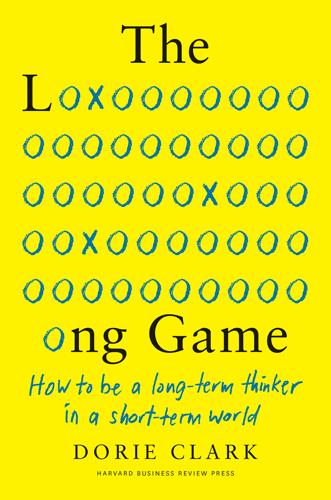
Long Game: How Long-Term Thinker Shorthb
by
Dorie Clark
Published 14 Oct 2021
Sure, there are things we’ve never really studied (“I wouldn’t even know where to start with electrical engineering”), or maybe even inabilities that have become part of our identity (“I’m terrible at sports”). But if we’re talking about the core competencies of our field, no one ever wants to be bad. Or even mediocre. It’s like the business equivalent of the “Lake Wobegon effect,” in which all the children in town are purportedly above average. That’s the phenomenon Frances Frei and Anne Morriss tackled in their book Uncommon Service. I first got to know Frances, a Harvard Business School professor, and Anne, an entrepreneur, nearly a decade ago, when I interviewed them about the book for Forbes.
…
See also networks and networking connectors, 150–151 content creation, 103–105, 118–119 gaining recognition through, 125 leveraging, 126–127 Corcoran, Marlena, 83–84 CORE Leadership Program, 63 costs opportunity, 45–46 physical/emotional, 46–47 Covid-19 pandemic, 3–5, 87 creating, 103–105 Crenshaw, Dave, 27–29, 197–198 culture going against the prevailing, 29 on our calling, 56 curiosity, 210 customer service, 40–41 Cutruzzula, Kara, 103–104 Davies, Ali, 24 deadlines, 88–89, 187–188 deception phase of exponential growth, 166–167 delayed gratification, 193–196 Deloitte, 63 Del Val, Dayna, 181–184 Design the Life You Love workshop, 110–111 Diamandis, Peter, 165–166 DiBernardo, Albert, 106, 200–201 Dierickx, Constance, 60–61 Dijksterhuis, Ap, 117–118 distance to empty, 197–199 diversity, long- vs. short-term thinking about, 6–7 documentary filmmaking, 57–58 Do It for Yourself (Cutruzzula), 104 dorieclark.com, 221 Drucker, Peter, 110, 117 Edison, Thomas, 181 Edmondson, Amy, 119 Edwards, Sue, 57–58 email, 21–22 emotional costs, 46–47 The E-Myth Revisited (Gerber), 102 e-newsletters, 220–221 Entrepreneurial You (Clark), 5, 99, 147, 220 entrepreneurship, learning, 101–103 Etsy, 62 execution mode, 3 hidden benefits of, 22–25 expectations, 168–169 experimentation, 15 20% time for, 14, 74–78 failure and, 180–181 expertise, recognition for, 125–127 exploration, 73–93 20% time for, 14, 74–78 carving out time for, 82–85 life portfolios and, 78–80 of New York City, 73–74, 81–82 realizing dreams through, 85–92 exponential growth, 165–167 exponential technologies, 165–166 failure, 9, 15 extreme goals and, 173–179 finding alternatives and, 184–187 involving your community and, 188–190 looking foolish and, 66–67 minimum benefit and, 90 multiple paths and, 181–184 resilience and, 211 rethinking, 173–190 family, 47–48 leveraging for, 120 meaning-based goals and, 55–56 prioritizing, 27–28 saying no and, 39, 46 Feingold, Sarah, 61–62 Fernandez, Jenny, 139–140, 149 Ferrazzi, Keith, 102 Ferriss, Tim, 23 focus, 14–15, 53 deciding what to be bad at and, 39–41 heads-up/heads-down strategy for, 99–100 on money, 55 strategic leverage and, 112, 115–128 thinking in waves and, 95–113 time for exploring, 73–93 Fogg, BJ, 195 FOMO (fear of missing out), 34, 47–48 Forbes, 97–98 Fowlds, Samantha, 205–206 Freestyle Love Supreme Academy, 65–66 Frei, Frances, 40–41 Friedman, Stew, 119 Fun Home (musical), 74 gatekeepers, 161–162 Gautam, Tanvi, 138–139 Gerber, Michael, 102 Germanotta, Stefani, 192 Getting Things Done (Allen), 29–30 Gino, Francesca, 133–134, 149 Give and Take (Grant), 141 Gmail, 75 goals, 14–15, 53 20% time and, 82–85 based on the kind of person you want to be, 65–67 coaches for, 86–88 deadlines for, 88–89 deciding what to be bad at and, 39–41 dreams and, 85–92 evaluating opportunities based on, 38–39 evaluating what you’re doing now and, 59–61 exploring, 92 extreme, 67–72, 173–179 failure and, 173–179 forgetting what others think and, 63–65 getting support for, 86 leveraging for professional, 122–123 optimizing for interesting, 14, 56–59 perseverance and, 157 planning around your priorities and, 27–30 remembering why you started and, 61–63 setting, 55–72 strategic overindexing and, 96–98 time frames for, 90–92 tracking data on, 115–116 Godin, Seth, 171 Goldsmith, Marshall, 109–112, 117 Good Morning America (TV show), 145–146 Good to Great (Collins), 102 Google, 159 20% time at, 14, 74–78 News, 75 X, 76–78 Granovetter, Mark, 132 Grant, Adam, 141 gratification, short-term vs. long-term, 13, 193–196 Gulati, Daniel, 147 Guthier, Christina, 122–123 habits, tiny, 195 Hagel, John, 34 Hall, Jeffrey, 132 Hamilton (musical), 65–66 Harry Potter (Rowling), 161 Harvard Business Review, 97–98, 137, 159 heads-up/heads-down strategy, 99–100 hedonic adaptation, 160 “Hell yeah or no” strategy, 35–37 Hersey, Paul, 109–110 Hesselbein, Frances, 110 Hill, Napoleon, 184 Horn, Sam, 187, 188 Incontrera, Marie, 70–71 information asking for, to evaluate opportunities, 42–44 attention to, 25 hoarding, 12 networking and, 107–108 innovation exponential growth and, 165–166 feature, 7 life portfolios in, 78–80 making time for, 14 space for, 29–30 interest optimizing for, 14, 56–59 setting goals based on, 59–61 time for exploring, 73–78 introverts, 107–108 jazz album, 146–149 Joel, Mitch, 144–145 Johnson, Rukiya, 55–56 Kalin, Rob, 62 KashKlik, 142–143 Kaur, Manbir, 46–47 Kim, W. Chan, 179 Klein, Joe, 176 Kleinert, Jared, 99 Kolber, Petra, 85–86, 88–90 Konnikova, Maria, 194 Kotler, Steven, 165–166 Lader, Linda, 96 Lader, Phil, 96 Lady Gaga, 192 Lake Wobegon effect, 40 Last, Becky, 84–85 Lazarus, Bruce, 74 lean startup methodology, 180–181 learning 20% time and, 92 avoiding doing by, 103 career wave of, 100, 101–103 continuous, 89–90 looking foolish during, 66–67 the next thing, 110–112 online, 5 setting extreme goals and, 67–72 Leonard, George, 167 leverage, 112, 115–128 of currency you have, 124–128 for lifestyle, 120–122 for professional goals, 122–124 for relationships, 120 life portfolios, 78–80 lifestyle, leveraging for, 120–122 Limitless (Otting), 143 Lindstrom, Martin, 6–7 Longfellow, Henry Wadsworth, 8 long-term thinking character and, 209–210 flexibility and, 6 foundational skills for, 195 for goals, 90–92 keys to, 209–211 optimizing for, 127–128 for personal life, 8–16 relevance of, 4 magical thinking, 28 Makabee, Hayim, 142–143, 149 Management Research Group, 21 Marion Stoddart: The Work of 1000 (documentary), 57–58 Marsh, Kris, 140–141 Marshall Goldsmith 100 Coaches (MG100), 111–112 marshmallow study, 193–194 Mary Baldwin University, 201–202 mastermind groups, 184–187 Mauborgne, Renée, 179 Mayer, Marissa, 75 McKinsey, 21 meaning optimizing for interesting and, 56–59 remembering why you started and, 61–63 setting goals based on, 55–56 Mencken, H.
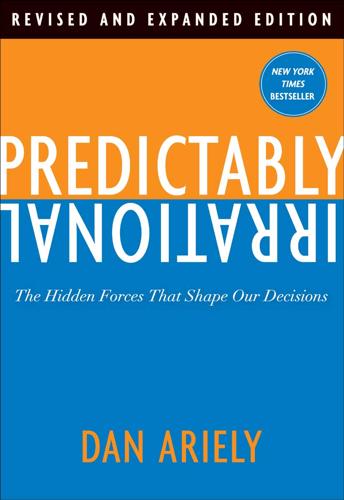
Predictably Irrational, Revised and Expanded Edition: The Hidden Forces That Shape Our Decisions
by
Dan Ariely
Published 19 Feb 2007
Think about it—don’t you feel that you are a better-than-average driver, are more likely to be able to afford retirement, and are less likely to suffer from high cholesterol, get a divorce, or get a parking ticket if you overstay your meter by a few minutes? This positivity bias, as psychologists call it, has another name: “The Lake Wobegone Effect,” named after the fictional town in Garrison Keillor’s popular radio series A Prairie Home Companion. In Lake Wobegone, according to Keillor, “all the women are strong, all the men are good-looking, and all the children are above average.” I don’t think we can become more accurate and objective in the way we think about our children and houses, but maybe we can realize that we have such biases and listen more carefully to the advice and feedback we get from others.
…
., 273–74 job performance. 320–24 public scrutiny and, 322 relationship between compensation and, 320–21, 322–24 Jobst suit, 192–94 Johnston, David Cay, 204 JP Morgan Chase, 280 judgment and decision making (JDM), xxviii see also behavioral economics “Just say no” campaign, 100, 101 K Kahneman, Daniel, 19, 129 Keeney, Ralph, 264 knee surgery, arthroscopic, 174–76 Knetsch, Jack, 129 Knight-McDowell, Victoria, 277 Koran, 215 L “Lake Wobegone Effect,” 268–69 Latin America, lack of trust in, 214 Lay, Kenneth, 219 learned helplessness, 312–16 experiments on, 312–14 in financial meltdown, 314–16 recovering from, 315–16 Leaves of Grass (Whitman), 40–41 Lee, Leonard, 21, 157–59, 161, 337 legal profession: attempts at improving ethics of, 213–14 decline of ethics and values in, 209–10 Lehman Brothers, 280, 310 leisure, blurring of partition between work and, 80, 81 Leland, John, 122–23 Leo III, Pope, 188 Leonardo da Vinci, 274 Levav, Jonathan, 231–37, 337 Levitt, Steven, xvi Li, Jian, 166–68 Lincoln, Abraham, 177 Linux, 81 List, John, xvi loans: punitive finance practices and, 300–301, 304 see also mortgages lobbyists, congressional restrictions on, 205 Loewenstein, George, 21, 26, 30–31, 39, 89,, 320–21, 337–38 Logic of Life, The (Harford), 291–92 Lorenz, Konrad, 25, 43 loss: aversion to, 134, 137, 138, 148–49 fear of, 54–55 Lost World, The (Crichton), 317–18 loyalty: in business-customer relations, 78–79 of employees to their companies, 80–84 M Macbeth (Shakespeare), 188 Madoff, Bernard, 291 Maier, Steve, 312-13 major, college students’ choice of, 141–42 manufacturer’s suggested retail price (MSRP), 30, 45 marketing: high price tag and, 24–25 hype of, related to satisfaction derived from product, 186–87, 190–91 relativity and, 1–6, 9–10 “trial” promotions and, 136–37 zero cost and, 49–50 market norms, 67–88 companies’ relations with their customers and, 78–80 companies’ relations with their employees and, 80–84, 252–54 doing away with, 86–88 education and, 85 mere mention of money and, 73–75 mixing signals of social norms and, 69, 73–74, 75–77, 79, 214, 250–52 reducing emphasis on, 88 social norms kept separate from, 67–69, 75–76, 77–78 willingness to risk life and, 84 working for gifts and, 72–74 working under social norms vs., 69–72 Maryland Judicial Task Force, 210 Mazar, Nina, 196–97, 206, 219–20, 224, 320–21, 338 McClure, Sam, 166–68 Mead, Nicole, 74–75 medical benefits, recent cuts in, 82 medical care, see health care medical profession: conflicts of interest and, 293, 295 decline of ethics and values in, 210 salaries of, as practicing physicians vs.
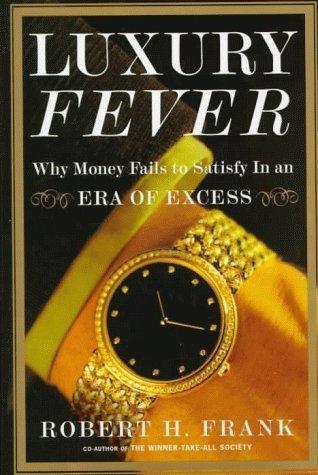
Luxury Fever: Why Money Fails to Satisfy in an Era of Excess
by
Robert H. Frank
Published 15 Jan 1999
Yet people’s assessments about these odds are notoriously inaccurate. Survey evidence consistently shows, for example, that more than 90 percent of us think we are better than average drivers; and that more than 90 percent of workers consider themselves more productive than their average colleagues. Psychologists call this the Lake Wobegon Effect, and its importance for present purposes is that it leads people to overestimate their odds of landing a superstar position. Indeed, overconfidence is likely to be especially strong in the realm of career choice because, in addition to the usual motivational biases that support it, the biggest winners are so conspicuous.
…
See also Public investments in progressive consumption tax system, 213-14 Invisible-hand theory, 9, 109, 146-47, 148, 171, 172, 236, 245, 267, 269-73 Ismail, Moulay, 134 Japan luxury spending in, 32 sumptuary laws during Tokugawa period, 200 Jayhawk Acceptance Corporation, 47 Jetta, 203 Job interviews, first impressions in, 139-40 Job satisfaction, 89 Job specialization, productivity and, 190-91 Kahneman, Daniel, 176 Kammann, Richard, 113 Kapanos, George, 26 Kapteyn, Arie, 74 Kellogg Company, 174 Kerrey, Bob, 224, 225 Keynes, John Maynard, 213 Kindergarten, mandatory starting dates for, 165-66 Klavin, Howard, 26 Koford, Kenneth, 119 Kozol, Jonathan, 256 Kush, Larry, 21 Labor mobility across national borders, tax rates and, 229-30 Labor regulations in Europe, 274 Labor supply decisions, 115 Lake Wobegon Effect, 237 Landers, Renee, 161 Langsam, Robert, 31 Laws. See also Regulation(s) restraining conspicuous consumption, 169-71 sumptuary, 168, 199-201, 208 zoning, 166 Layard, Richard, 134 Lead, toxic effects of, 54 Learning emotion and, 125-26 reinforcement and, 135-36 Le Cirque 2000, 18 Leisure time decline in, 49-50 value of, 241-42 Leviathan (Hobbes), 212 Lewis, Ken, 233 Lexus LX 450, 18 Liberal economic policy, 274 Liberals on current spending patterns, 268-69 paternalistic arguments of, 273 right policies for wrong reasons, 275 Libertarian objection to curbing conspicuous consumption, 195-99 Life expectancy, income and, 142-43 Linder, Staffan, 48-49 Living standards.

The Better Angels of Our Nature: Why Violence Has Declined
by
Steven Pinker
Published 24 Sep 2012
The players interacted with each other by computer and could not see each other, so the men didn’t know whether they were playing with another man or with a woman, and vice versa. Before they began, participants were asked to predict how well they would do relative to everyone else playing the game. The experimenters got a nice Lake Wobegon Effect: a majority thought they would do better than average. Now, in any Lake Wobegon Effect, it’s possible that not many people really are self-deceived. Suppose 70 percent of people say they are better than average. Since half of any population really is above average, perhaps only 20 percent think too well of themselves. That was not the case in the war game.
…
An early exposé was the sociologist Erving Goffman’s The Presentation of Self in Everyday Life, and recent summaries include Carol Tavris and Elliot Aronson’s Mistakes Were Made (but Not by Me), Robert Trivers’s Deceit and Self-Deception, and Robert Kurzban’s Why Everyone (Else) Is a Hypocrite.23 Among the signature phenomena are cognitive dissonance, in which people change their evaluation of something they have been manipulated into doing to preserve the impression that they are in control of their actions, and the Lake Wobegon Effect (named after Garrison Keillor’s fictitious town in which all the children are above average), in which a majority of people rate themselves above average in every desirable talent or trait.24 Self-serving biases are part of the evolutionary price we pay for being social animals. People congregate in groups not because they are robots who are magnetically attracted to one another but because they have social and moral emotions.
…
Narratives of harm: Baumeister, Stillwell, & Wotman, 1990. 21. Rate of anger: Baumeister et al., 1990. 22. Harm narratives with harm controlled: Stillwell & Baumeister, 1997. 23. Self-serving biases: Goffman, 1959; Tavris & Aronson, 2007; Trivers, in press; von Hippel & Trivers, 2011; Kurzban, 2011. 24. Cognitive dissonance: Festinger, 1957. Lake Wobegon Effect and other positive illusions: Taylor, 1989. 25. Moral emotions as the basis for cooperation: Haidt, 2002; Pinker, 2008; Trivers, 1971. 26. Advantages of the Moralization Gap: Baumeister, 1997; Baumeister et al., 1990; Stillwell & Baumeister, 1997. 27. Self-deception as an adaptation: Trivers, 1976, 1985, in press; von Hippel & Trivers, 2011. 28.
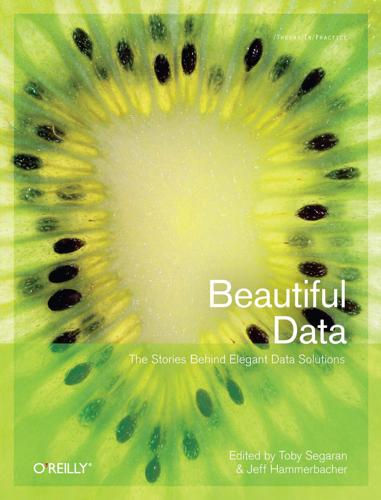
Beautiful Data: The Stories Behind Elegant Data Solutions
by
Toby Segaran
and
Jeff Hammerbacher
Published 1 Jul 2009
The narrative fallacy, confirmation bias, paradox of choice, asymmetry of risk-taking, base rate fallacy, and hyperbolic discounting were mentioned earlier. Psychologists have indexed many others, ranging from anchoring (overreliance on a single recent data point in making a decision) to the Lake Wobegon effect (the phenomenon of more than half of individuals in a population believing they are above average). As these effects become better documented, we can develop tools and intuitions to help take data at face value (part of my work is focused on developing tools for financial decisionmaking). In some sense, the solution is simple: data doesn’t do much if you don’t understand its limits.
…
(author), 35–53 Human Genome Project, 250 (see also DNA) INDEX Download at Boykma.Com I Image Compression Sub-System (ICS), 42 images (see Geograph archive; Phoenix Mars Lander system; Radiohead’s “House of Cards” video) Information Platforms, 74, 83 (see also Facebook’s Information Platform) information visualization, 86 informative test for surfacing, 142 informativeness test for surfacing, 136 Inmon, Bill (Building the Data Warehouse), 76 Integrated Public Use Microdata Series (IPUMS) databases, 186 integrating data from separate sources (see data integration) International Cancer Genome Consortium, 253 IPUMS (Integrated Public Use Microdata Series) databases, 186 J Jonas, Jeff (author), 105–118 K Kahneman, Daniel (experiment about prospect theory), 208, 215 Kastellec, Jonathan P. (author), 323–332 Kimball, Ralph (The Data Warehouse Toolkit), 76 Klump, Valdean (author), 149–165 Koblin, Aaron (author), 149–165 Krumme, Coco (author), 205–217 L Lake Wobegon effect, 217 Lang, Andrew (author), 259–277 language identification of corpus data, 239 “Learning Organization” concept, 78 Lewin, Kurt (“action research” concept), 78 libraries, as Information Platforms, 73 Lidar scanner (see Velodyne Lidar scanner) Lindenbaum, Pierre (author), 259–277 Lindsay, Jeff (Web Hooks concept), 127 Linguistic Data Consortium, 219 location information, representation of for Geograph archive, 95–98 for Oakland Crimespotting project, 174–181 for PEIR system, 8–11 for political data, 330 for sense.us website, 188–194 Luhn, Hans Peter (“A Business Intelligence System”), 75 luxury product, survey for (see customer survey project) M machine translation of corpus data, 240 Madhaven, Jayant (author), 133–147 maps (see location information, representation of) Mars Lander system (see Phoenix Mars Lander system) mastership of records, 60, 61 materialized views, 66 Matlab (data analysis package), 282 Matplotlib (data analysis package), 282 Matsumoto, Yukihiro (Ruby programming language), 89, 98 MECA Optical Microscope (OM) camera, 38 mediator accessing Deep Web using, 135 for social data (see Gnip) Medicare website, 337 message boards, public data available from, 337 Microsoft Azure SDS, 70 Microsoft’s data management stack, 82 Migurski, Michal (author), 167–182 MObStor system, 71 Modest Maps library, 8 Morville, Peter (“findability” concept) motivation considerations for data collection, 21, 30 music video based on data (see Radiohead’s “House of Cards” video) N narrative fallacy, 207 National Center for Biotechnology Information (NCBI) website, 336 natural language corpus data, 219, 240 author identification of, 239 DNA sequencing of, 240 document unshredding of, 240 language identification of, 239 machine translation of, 240 search strategies used for, 241 secret codes in, analysis of, 228–234 spam detection in, 239 spelling correction of, 234–239 word segmentation analysis of, 221–227 NCBI (National Center for Biotechnology Information) website, 336 INDEX Download at Boykma.Com 361 Neylon, Cameron (author), 259–277 normalization of social data, 128–131 Norvig, Peter (author), 219–242 Num Py (data analysis package), 282 O Oakland Crimespotting project, 167 data collection from CrimeWatch, 169–174 visualizing data online, 174–181 Oakland CrimeWatch application, 169–174 OAuth, 130 O’Connor, Brendan (author), 279–301 Open Notebook Science, 261 Optical Microscope (OM) camera, 38 P P2P protocol, 121 partitioning data, 56 patterns, people’s skill at recognizing, 206 PEIR (Personal Environmental Impact Report) system, 2 data collection for, 3, 4 data processing for, 6 data visualization for, 8–12 database design for, 5 participating in, 15 sharing data from, 12 perception considerations for data collection, 20–21 persistent context, 115 personal data collection of, 3–5 visualization of, 7–14 Personal Environmental Impact Report (see PEIR system) Phoenix Mars Lander system, 35–40 cameras (imagers) for, 38, 53 computer used for, 37 data collection for, 37 data packing for, 40 data processing for, 42, 46–51, 53 data storage for, 43–46 data transfer for, 37, 52 image compression for, 50 websites about, 54 photographs (see Geograph archive; Phoenix Mars Lander system) planning fallacy, 212 PNUTS system, 56 comparison with Azure SDS, 70 comparison with BigTable system, 68 comparison with Cassandra system, 70 comparison with Dynamo system, 69 geo-replication of data in, 56, 58 362 partitioning data for scale-out, 56, 62 querying data, 64–67 updating data, 57–64 political data, 323 age, effect on vote choice, 328 graphics used for, 323 mapping partisanship in Pennsylvania, 330 predicting vote choice, 326 redistricting, effect on partison bias, 324 supreme court nominees, senate voting patterns on, 328 polling, 123 Poole, David (author), 303–321 Popper, Karl (statement about falsifiability), 209, 213 predictions, difficulty in making from data, 213 privacy, with “data finds data” systems, 118 probabilistic model, 221 probability, 215, 220 public data, sources of, 336 Purves, Ross (research using Geograph), 92 PyHive framework, 81 Q Quants, as Data Scientists, 84 R R (data analysis package), 282, 300 RAC (Robotic Arm Camera), 38 Radiohead’s “House of Cards” video, 149 data capture equipment for, 150–154 data capturing process for, 155–159, 164 data processing for, 160 data sample for, 154 launching, 161–164 Ramakrishnan, Raghu (author), 55–71 range-partitioned data, 62 rate limiting, used with polling, 123 raw data, providing to users application for querying live data, 265 collecting crowdsourced data, 260 further experiments suggested by, 271–274 integrating data with other data resources, 266 problems created by, 275–277 reasons for, 259, 274, 276 representing data online, 263–271 self-describing data formats for, 269 unique identifiers required for, 263, 269 validating crowdsourced data, 262 Raynard, Robert (Secret Code Breaker), 233 RDF (Resource Description Framework), 269 INDEX Download at Boykma.Com real estate sales, analysis of (see housing market analysis) record-level mastership, 61 relational model for data, 76 replication of DNA, 247 geo-replication of data, 56, 58 reporting on data results (see data visualization) REpresentational State Transfer (REST), 122 Resource Description Framework (RDF), 269 resources (see books and publications; website resources) REST (REpresentational State Transfer), 122 Rice algorithm for compression, 51 Robotic Arm Camera (RAC), 38 roulette wheel example of “data finds data”, 107–111 S San Francisco housing market analysis (see housing market analysis) Sanger Institute’s sequencing platform for DNA data, 254–257 SAS (data analysis package), 282 scale-out feature for data storage, 56 Sci Py (data analysis package), 282 search engines, accessing Deep Web from (see surfacing) search strategies for corpus data, 241 Secret Code Breaker (Raynard), 233 secret codes in corpus data, analyzing, 228–234 Securities and Exchange Commission website, 336 Segaran, Toby (author), 335–348 semantically reconciled and relationshipaware directories, 114 semantically reconciled directories, 114 Senge, Peter (The Fifth Discipline), 78 sense.us website, 184, 186 Birthplace Voyager graph, 191 census data used for, 186–188 collaboration features of, 194–199, 201 doubly linked discussions, 195 field tests of, 199–203 Job Voyager graph, 191 pointing with graphical annotations, 196 population pyramid, 192 scatter plot display, 192 social navigation, 198 state map, 192 views, collecting and linking, 197 views, sharing, 194 visualization of data, 188–194 Sequencescape tools, 254 sequencing platform for DNA data, 254–257 shift ciphers, 228 Singh, Simon (The Code Book), 230 social data, 119 business value of, 129–131 formats for, current, 121 normalizing, 128–131 public versus private data, 130 sharing and collaborating on, 194–199, 201 transporting, APIs for, 122–128 transporting, current methods for, 120 visualization and analysis of, 184, 199 visualization of, 188–194 social networks, public data available on, 336 social stereotypes, researching, 279 clustering types of people, 295–300 data analysis, 282, 290–294 gendered words, determining, 294 preprocessing the data, 280 presentation of data results, 285–290 Sokol, Lisa (author), 105–118 space missions (see Phoenix Mars Lander system) spam detection in corpus data, 239 spelling correction of corpus data, 234–239 SPSS (data analysis package), 282 Srivastava, Utkarsh (author), 55–71 Stata (data analysis package), 282 Stereo Surface Imager (SSI), 38 stereotypes (see social stereotypes, researching) storage cloud, 56, 70 (see also PNUTS system) stories created from data, 208, 211 stylometry of corpus data, 239 substitution ciphers in corpus data, analyzing, 228–234 surfacing, 135, 136 challenges of, 136 informative test for, 136, 142 inputs for, selecting, 140, 144–146 queries for, selecting, 138–144 query templates for, 139, 141, 143 survey project (see customer survey project) Swayne, Deborah F.
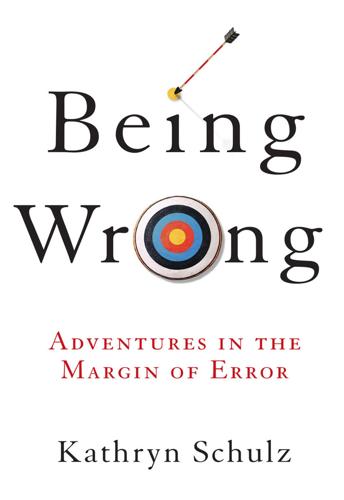
Being Wrong: Adventures in the Margin of Error
by
Kathryn Schulz
Published 7 Jun 2010
.* In other words, if we want to discredit a belief, we will argue that it is advantageous, whereas if we want to champion it, we will argue that it is true. That’s why we downplay or dismiss the self-serving aspects of our own convictions, even as we are quick to detect them in other people’s beliefs. Psychologists refer to this asymmetry as “the bias blind spot.” The bias blind spot can be partly explained by the Lake Wobegon Effect, that endlessly entertaining statistical debacle whereby we all think that we are above average in every respect—including, amusingly, impartiality. But a second factor is that we can look into our own minds, yet not into anyone else’s. This produces a methodological asymmetry: we draw conclusions about other people’s biases based on external appearances—on whether their beliefs seem to serve their interests—whereas we draw conclusions about our own biases based on introspection.
…
., 163–64 confabulations and, 77–86 memory failures and, 71–77 perception and, 53–54 reliance on other people’s, 137–44 Kocourek, Tom, 380n Kolbert, Elizabeth, 367n Kraepelin, Emil, 82 Krugman, Paul, 90 Kübler-Ross, Elisabeth, 229–30 Kuhn, Thomas, 125–27, 126n, 167, 186, 187n, 208, 349n Ku Klux Klan (KKK), 273–79, 284n, 294–95 Lake Wobegon Effect, 106–7 Lancaster Sound, 48–50, 353n Landsgemeinde, 147–48, 151 language, 97, 98, 116n, 119–21, 252–53, 307–9 Lanir, Zvi, 374n Laplace, Pierre-Simon, 34–35 La Rochefoucauld, François de, 263 Larousse, 29, 348n Laser Interferometer Gravitational-Wave Observatory, 94 laughter, 321–26, 389–90n Lee, Keunwoo, 210n Leka, Donald, 122–23 Leno, Jay, 175 Letters on Natural Magic (Brewster), 63–64 Levin, Harry, 390n Levitt, Arthur, 90 Levy, Paul, 301, 302, 304–5, 316, 385n Lewis, Meriwether, 48 Lewis, Michael, 89 Limits to Growth, The, 25–26 Linton, Ralph, 31 listening, 309–11 Liszt, Franz von, 223–24, 377n Locke, John, 22, 139, 253 “losing face,” 26 love, 259–72 characteristic emotions of falling in, 261–62 in literarature, 251–52, 260–61 notion of, 259–66 rift between us and the world, 253–59 self-knowledge and the self, 283n tools for understanding one another, 251–53 Lynch, Jessica, 64n Lynd, Helen Merrell, 191, 373n Lysenko, Trofim Denisovich, 154n lysenkoism, 154n McArdle, Megan, 196–97n McCain, John, 177 McGrath, Michael, 234–37, 245–46, 379n McGregor, Angus, 128 machines, and belief, 334–35 Mack, Maynard, 172n, 390n MacMillan, Donald, 52n Madison, James, 314 madness, 35, 38–40, 41, 190 Madoff, Bernie, 187, 215–16 Magliozzi, Ray, 141 Magliozzi, Tom, 141 Maistre, Joseph-Marie de, 312 “management by fact,” 305–6 Margalit, Avishai, 142, 250n Mariana Trench, 141 market self-regulation, 87–90 Markus, Greg, 185, 371–72n Masada, 161, 161n May, Rollo, 178–79, 326 Mbeki, Thabo, 232, 379n Meadows, Donella, 26 medical errors, 299–302, 301n, 304–6, 316, 317, 386n Mele, Alfred R., 375–76n Melnikoff, Arnold, 235 melted by fire, 189–90 memories, 71–77, 184–85 Menand, Louis, 34 Midnight Cry, The, 204 military psychological operations (psyops), 64n Miller, William (Millerites), 201–16, 218–19, 373n, 374–75n mind belief.
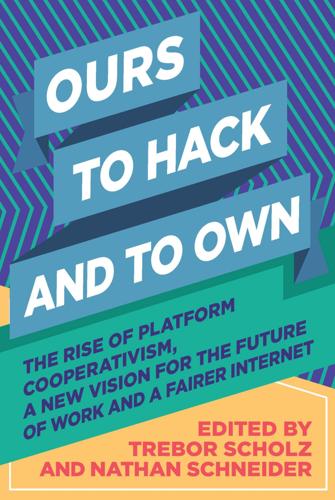
Ours to Hack and to Own: The Rise of Platform Cooperativism, a New Vision for the Future of Work and a Fairer Internet
by
Trebor Scholz
and
Nathan Schneider
Published 14 Aug 2017
Such systems fail to discriminate among good and bad service providers, and researchers have confirmed that there is often no real relationship between rating and quality. There is no evidence that an Uber driver with a rating of 4.9 is better than one with a rating of 4.6, even though the latter is in danger of being kicked off the Uber platform. One underlying reason for the Lake Wobegon effect is that when we are unhappy at an interaction, many people follow the maxim “if you can’t say anything nice, say nothing at all.” Some leave no rating after a substandard Airbnb visit because they do not want the awkwardness that may go along with putting out a negative evaluation for the world to see.
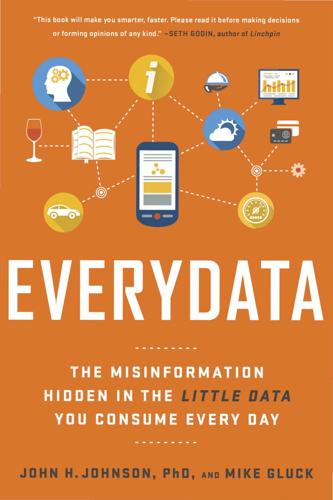
Everydata: The Misinformation Hidden in the Little Data You Consume Every Day
by
John H. Johnson
Published 27 Apr 2016
See also misrepresentation and misinterpretation brain’s hardwiring for, 60–61 challenges in, 54–55 Ioannidis, John, 75 iPhones, 46–48, 58 “Ipse dixit” bias, 94 J Japan earthquake of 2011, 123–125 Jordan, Michael, 53 Journal of Epidemiology and Community Health, 80 Journal of Finance, 139–140 Journal of Safety Research, 20 Journal of the American Medical Informatics Association, 148 Journal of the National Cancer Institute, 69–70 K Katz, David, 22 Keillor, Garrison, 43 L Lake Wobegon effect, 42–43 Landon, Alfred, 132 Law360, 146–148 Lawyer Satisfaction Survey, 146–148 Literary Digest, 132 longevity, 4, 87–92 Los Angeles Times, 17–18 Lotto Stats, 133 Lund, Bob, 10 M magnitude, 77–78, 81 in birth month and health study, 149 map projections, 83–85 margins of error, 38, 68–69 Marie Claire, 34–35 math mistakes, 101–102, 103 mayors/deputy mayors salaries, 35–36 McCarthy, Jenny, 61 McGwire, Mark, 39 meaning, difficulty of extracting from too much data, 4.

Street Smart: The Rise of Cities and the Fall of Cars
by
Samuel I. Schwartz
Published 17 Aug 2015
Some people did—and still do—dream of a house with a fence in front and a garden (or swimming pool!) out back. Others sought out suburbs as an escape from cities that seemed, and often were, dirty, crowded, and dangerous. A lot of families continue to shop for a suburban school district in search of what I call the Lake Wobegon Effect: a place where all the children are above average and therefore get an above-average education (though their math must be a little below average if they believe this to be true). But the best explanation for why Americans overwhelmingly chose suburban living for more than fifty years, and so many continue to do so today, is money.
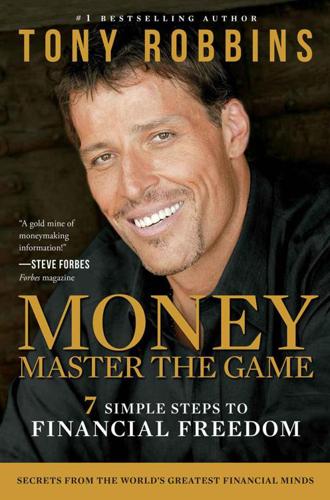
MONEY Master the Game: 7 Simple Steps to Financial Freedom
by
Tony Robbins
Published 18 Nov 2014
Most of us think we’re better than we really are at predicting patterns and luckier than we really are when there’s a jackpot at stake. What else can explain why so many people play the lottery?! A famous 1981 study at Stockholm University found that 93% of US drivers think their skills are above average. There’s even a name for this phenomenon: “the Lake Wobegon Effect,” referring to author Garrison Keillor’s mythical town where “all the children are above average.” Hey, who doesn’t think they’re above average! But when it comes to money, delusions that you’re better than everybody else can kill you. If you’re a man, you’re guilty of this bias by biochemistry.
…
Morgan, 309, 498–99, 501–2 junk bonds, 318, 323 Kadlec, Gregory, 114 Kamen, Dean, 566 Karp, David, 125–26 Kay, Alan, 551 Keillor, Garrison, 334 Kennedy, John F., 19 Ki-hoon, Kim, 266–67 King, Martin Luther Jr., 586 Kissinger, Henry A., 230 knowledge, as potential power, 65 Kodak, 269, 318 Krom, Erik, 117 Kurzweil, Ray, 47, 410, 421, 551, 557, 563–67, 568–69, 571 Labor Department, U.S. (DOL), 146–47, 152 LaChappelle, Easton, 557–59 Lake Wobegon Effect, 334 Lao-Tzu, 26, 29 Las Vegas Sands Corp., 62 Lauer, Matt, 270, 349–50, 485 Lawrence, T. E., 203 leadership, 501 Leape, Jim, 556 learned helplessness, 180 Lee, Bruce, 42 Lehman Brothers, 378 Lewis, JT, 591–93 Lewis, Michael, 7 LIBOR (London Interbank Offered Rates), 123, 516 lies we tell ourselves, 183–99, 249 and breakthroughs, 184–99 and fear of failure, 183–84 and fear of unknown, 185 life: as adventure, 291 artificial, 566 balance in, 258, 577 decisions in, 244, 246 as information technology, 566 quality of, 37, 292, 538, 576, 577, 580–82, 583 race of, 233 you as creator of, 226, 229, 246 your stage in, 331–32 lifecycle funds, 157 life expectancy, 31–32, 409, 538 life insurance: borrowing from, 446–47 death benefit proceeds from, 447 PPLI, 443–48 in Security/Peace of Mind Bucket, 309 lifestyle, 209–10, 218 changing, 287–92, 612 and Dream Bucket, 341 moving to another place, 288–91 437 Lifetime Income plan, 46, 170–71, 308, 406–18, 613–14 annuities, 416–18, 419–41 income insurance, 415–16 John’s case, 412–14 Susan’s case, 414–16 Lincoln, Abraham, 19 liquidity, 302, 331 Livermore, Jesse, 525 living trust, 448–49 LL Cool J, 15 Lombardi, Vince, 51 longevity insurance, 426–27 “lost decade,” 107, 357, 366, 396 lottery: in retirement, 412 spending money on, 37, 334 love and connection, 77 luck, 228–29, 343, 412 Lynch, Peter, 354, 400 Magellan fund, 400 Maker Revolution, 559–61 Malkiel, Burton, 49–52, 59, 96–97, 326, 354, 356–58 on compounding, 50–52 on diversification, 325 on dollar-cost averaging, 355, 358, 365, 366 and index funds, 49, 97 on rebalancing, 359, 361 on tax-loss harvesting, 362 Mallory, George, 406, 409 Marcus Aurelius, 381 marketing, 85, 97, 102 market timing, 97, 296 Markowitz, Harry, 297, 379, 472 Marley, Bob, 232 mastery: execution as, 65 levels of, 42 Mayweather, Floyd “Money” Jr., 53–54, 210 McCarty, Oseola, 60–61, 62, 63 McDonald’s, 373–74 McGonigal, Kelly, 190–99 meaning, 575, 580–82 Meat Loaf, 52 Medicare/Medicaid, 149 Mellon, Andrew, 315 Merckle, Adolf, 66, 71–72, 73 Metallica, 314 MF Global, 123 Microsoft, 377 millionaires vs. billionaires, 208–10 minimum wage, 263 mob mentality, 348–49 momentum trading, 325 money: as abstract concept, 3–4 compounding, 35–36, 49–52, 58, 60, 62–65, 256, 364 control of, 14 critical mass of, 33, 58, 89, 90, 408 doubling, 283, 284 emergency/protection fund, 216–17, 302 and emotion, 209, 210 and financial freedom, 5–6 and happiness, 588–91 loss of, 336 love of, as root of evil, 195 to make money, 192 mastery of, 6, 71 nest egg, 58, 257 and power, 3 as reflection of creativity, 193 for retirement, 32, 210–11 spending plan, 253–56 as tool, 3 trading time for, 54 what you earn vs. what you keep, 273 where to put, see asset allocation worry about, 190–91 Moneyball, 65 Moneychimp, 119 money machine, 184, 192, 230, 254 savings as, 55–70 money market deposit accounts, 303 money market funds, 303 money masters: advice from, 455–57 author’s interviews with, 453–55 money pass, 333 Money Power Principles, 57, 230 1.
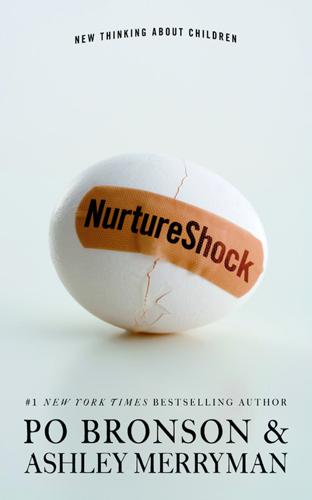
NurtureShock: New Thinking About Children
by
Po Bronson
and
Ashley Merryman
Published 2 Sep 2008
The easy explanation has always been to blame aggression on a bad home environment. There’s an odd comfort in this paradigm—as long as your home is a “good” home, aggression won’t be a problem. Yet aggression is simply too prevalent for this explanation to suffice. It would imply a unique twist on the Lake Wobegon Effect—that almost every parent is below average. Aggressive behavior has traditionally been considered an indicator of psychological maladaptation. It was seen as inherently aberrant, deviant, and (in children) a warning sign of future problems. Commonly cited causes of aggression were conflict in the home, corporal punishment, violent television, and peer rejection at school.

Everything Is Obvious: *Once You Know the Answer
by
Duncan J. Watts
Published 28 Mar 2011
Around 90 percent of Americans believe they are better-than-average drivers, and a similarly impossible number of people claim that they are happier, more popular, or more likely to succeed than the average person. In one study, an incredible 25 percent of respondents rated themselves in the top 1 percent in terms of leadership ability.7 This “illusory superiority” effect is so common and so well known that it even has a colloquial catchphrase—the Lake Wobegone effect, named for Prairie Home Companion host Garrison Keillor’s fictitious town where “all the children are above average.” It’s probably not surprising, therefore, that people are much more willing to believe that others have misguided beliefs about the world than that their own beliefs are misguided.
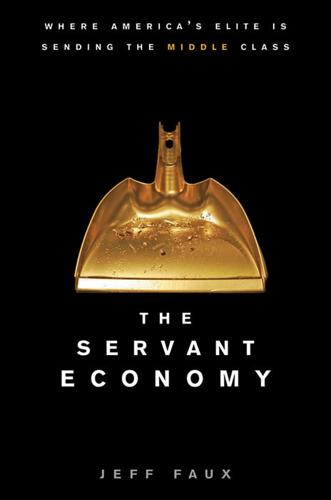
Servant Economy: Where America's Elite Is Sending the Middle Class
by
Jeff Faux
Published 16 May 2012
But the polls also revealed something else: a gap between people’s perception of the nation’s economic fate and their own. The same polls that reported that Americans were pessimistic about the country’s future and believed that the next generation would be poorer also showed that they were optimistic about their own prospects. What one might call the “Lake Wobegon effect” is strikingly persistent. In June 2010, for example, 71 percent of Americans reported that they were doing better than average. Their neighbors and coworkers might be in for a rough time, but they and their children would be fine. When asked by Pew Charitable Trust pollsters about the next forty years, 56 percent thought that the U.S. economy would be weaker, but 64 percent were optimistic about the prospects for themselves and their children.
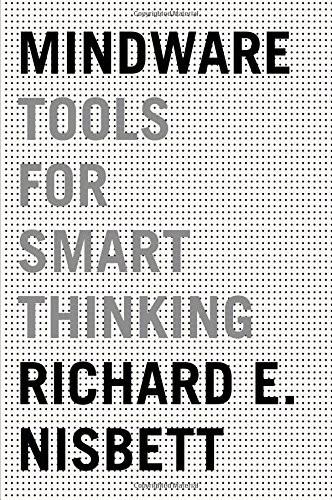
Mindware: Tools for Smart Thinking
by
Richard E. Nisbett
Published 17 Aug 2015
European Americans at Berkeley rate themselves as more conscientious than do Asian Americans at Berkeley, but not when you have both groups compare themselves to the explicit reference group of “typical Asian American Berkeley students.”13 Other things being equal, people in most cultures believe they are superior to most others in their group. This self-enhancement bias is sometimes known as the Lake Wobegon effect, after Garrison Keillor’s mythical town where “all the children are above average.” Seventy percent of American college students rate themselves as above average in leadership ability, and only 2 percent rate themselves below average.14 Virtually everyone self-rates as above average in “ability to get along with others.”
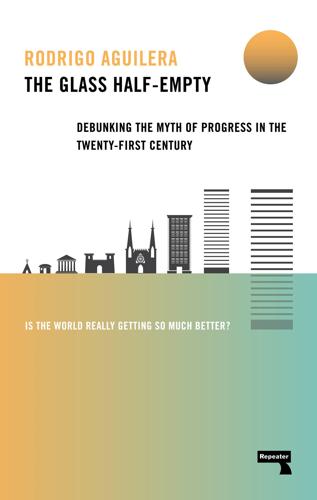
The Glass Half-Empty: Debunking the Myth of Progress in the Twenty-First Century
by
Rodrigo Aguilera
Published 10 Mar 2020
The greatest satisfaction o feeling of competence would therefore result from being able to control the seemingly uncontrollable. Finally, rounding out the trio of cognitive biases that promote optimism is illusory superiority, which is also known by a plethora of other names including the superiority bias, the above-average effect, and the Lake Wobegon Effect, in reference to the fictional Minnesota town of the Prairie Home Companion radio show where “all the women are strong, all the men are good looking, and all the children are above average”. This bias has it that people tend to overestimate their skills and qualities relative to other people, usually considerably so.

How the Mind Works
by
Steven Pinker
Published 1 Jan 1997
Darwin’s anti-Darwinism: Fridlund, 1992. 415 Voluntary and involuntary facial expressions, method acting, and the brain: Damasio, 1994. 415 Honest signaling in animals: Dawkins, 1976/1989; Trivers, 1981; Cronin, 1992; Hauser, 1996; Hamilton, 1996. 416 Emotions and the body: Ekman & Davidson, 1994; Lazarus, 1991; Etcoff, 1986. 417 Theory of mad love: Frank, 1988. 417 Marriage market: Buss, 1994; Fisher, 1992; Hatfield & Rapson, 1993. 419 Tactics for controlling self and others: Schelling, 1984. 420 Grief as a deterrent: Tooby & Cosmides, 1990a. 421 Self-deception: Trivers, 1985; Alexander, 1987a; Wright, 1994a; Lockard & Paulhaus, 1988. Self-deception and Freudian defense mechanisms: Nesse & Lloyd, 1992. 422 Split brains: Gazzaniga, 1992. 422 Lake Wobegon effect: Gilovich, 1991. 422 Beneffectance: Greenwald, 1988; Brown, 1985. Cognitive dissonance: Festinger, 1957. Cognitive dissonance as self-presentation: Aronson, 1980; Baumeister & Tice, 1984. Beneffectance and cognitive dissonance as self-deception: Wright, 1994a. 424 Argument between husband and wife: Trivers, 1985, p. 420. 424 Explaining Hitler: Rosenbaum, 1995. 7.
…
., 579 Koestler, Arthur, 77, 545, 549, 551, 587 Konner, Melvin, 506, 578, 583, 586 Kosslyn, Stephen, 77, 289, 292, 569, 570, 576, 577 Kowler, Eileen, 576 Kpelle (Liberia), 302–303 Kubovy, Michael, 575, 576, 577, 587 Kubrick, Stanley, 582 !KungSan, 51, 489, 505, 506 Kunstler, William, 54 Kwakiutl, 500 La Rochefoucauld, François, 423 Lachter, Joel, 571 Lake Wobegon effect, 422 Lakoff, George, 311–312, 357, 574, 578, 579, 580, 586 Lamarck, Jean Baptiste, 158, 206, 209 Lamarckian evolution, 158–159, 160, 206–208, 209, 414 Land, Edwin, 246–248, 576 Landau, Barbara, 579 Landsburg, Steven, 477, 540, 584, 587 Landscapes, 374–378 Langlois, Judith, 585 Language, in children, 48, 356–357, 450; combinatorics of, 88; and connectionism, 112–113, 118–122, 125; and emotion, 366–367; and evolution, 165, 184, 186, 190, 403; and intuitive psychology, 330; mental representations for, 90, 139–140; and music, 528–529, 534–535, 538; and shape, 270–271; and thought, 69–70, 86, 88, 492.
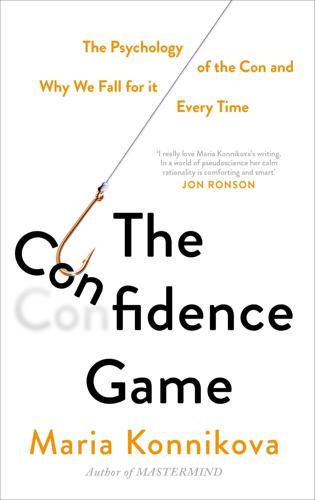
The Confidence Game: The Psychology of the Con and Why We Fall for It Every Time
by
Maria Konnikova
Published 28 Jan 2016
In June 2013, Tilly’s appeal of his sentence came before the court. He had wanted clemency. It was too much to believe he had had the power over such discerning people. Surely they were to blame. The judge listened closely. And he did award him a new sentence: ten years, instead of the original eight. It goes by many names. The Lake Wobegon effect. The better-than-average effect. Illusory superiority. Superiority bias. Whatever you call it, it means the same thing: we believe we are singular, whatever the circumstances. It could be that we’re especially attractive and brilliant, in the case of Frampton, or that our family legacy is unique in history.

Masters of Management: How the Business Gurus and Their Ideas Have Changed the World—for Better and for Worse
by
Adrian Wooldridge
Published 29 Nov 2011
The financial services industry spends $600 million a year in lobbying in Washington, DC. The result of all this political manipulation is nothing less than a “hostile take-over of capitalism by company executives.” For those who find this explanation a little crude, there is a more ingenious one called “the Lake Wobegon effect.” Rachel Hayes and Scott Schaefer, two economists, argue that companies want to signal that they have the best CEOs, so they raise their pay to impressive levels. More generally, companies want to make sure that they pay their CEOs above average in the business because they want to employ above-average people.
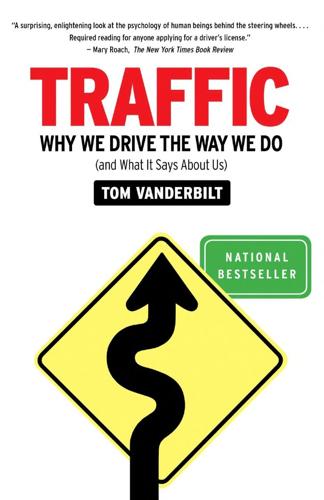
Traffic: Why We Drive the Way We Do (And What It Says About Us)
by
Tom Vanderbilt
Published 28 Jul 2008
We think stricter laws are a good idea for the people who need them. Another problem with our view of ourselves is that we tend to rank ourselves higher, studies have shown, when the activity in question is thought to be relatively easy, like driving, and not relatively complex, like juggling many objects at once. Psychologists have suggested that the “Lake Wobegon effect”—“where all the children are above average”—is stronger when the skills in question are ambiguous. An Olympic pole-vaulter has a pretty clear indication of how good she is compared to everyone else by the height of the bar she must clear. As for a driver who simply makes it home unscathed from work, how was their performance?
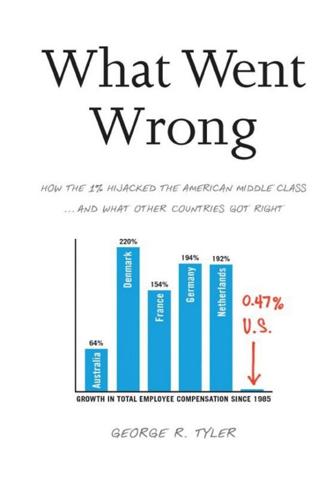
What Went Wrong: How the 1% Hijacked the American Middle Class . . . And What Other Countries Got Right
by
George R. Tyler
Published 15 Jul 2013
Stancata, Stephane Cote, Rodolfo Mendoza-Denton, and Dacher Keltner, “Higher Social Class Predicts Increased Unethical Behavior,” Proceeds of the National Academy of Sciences, February 27, 2012. 15 For example, see: Randall Morck, Andrie Shleifer, and Robert Vishny, “Alternative Mechanisms for Corporate Control,” American Economic Review, 1989, 79:842–852. 16 Ian Austen, “Shake-Up at Canadian Pacific Railway As Activist Investor Takes Control,” New York Times, May 18, 2012. 17 Peter Whoriskey, “The Lake Wobegon Effect Lifts CEO’s Pay,” Washington Post, Oct. 4, 2011, and Ryan Chittum, “Cronyism and Executive Compensation,” The Audit, Columbia Journalism Review, Oct. 4, 2011. 18 Whoriskey, Ibid. 19 Heather Landy, “Executives Took, But the Directors Gave,” New York Times, April 5, 2009. 20 David Cay Johnston, Perfectly Legal, 2003, 250. 21 David Carr, “Why Not Occupy Newsrooms?
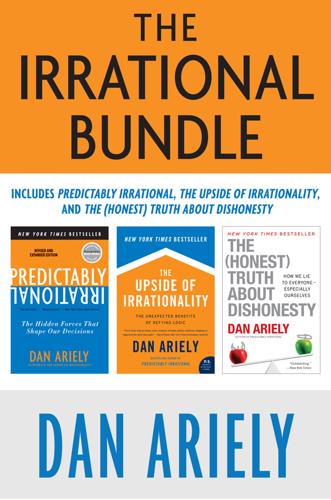
The Irrational Bundle
by
Dan Ariely
Published 3 Apr 2013
Think about it—don’t you feel that you are a better-than-average driver, are more likely to be able to afford retirement, and are less likely to suffer from high cholesterol, get a divorce, or get a parking ticket if you overstay your meter by a few minutes? This positivity bias, as psychologists call it, has another name: “The Lake Wobegone Effect,” named after the fictional town in Garrison Keillor’s popular radio series A Prairie Home Companion. In Lake Wobegone, according to Keillor, “all the women are strong, all the men are good-looking, and all the children are above average.” I don’t think we can become more accurate and objective in the way we think about our children and houses, but maybe we can realize that we have such biases and listen more carefully to the advice and feedback we get from others.

Bourgeois Dignity: Why Economics Can't Explain the Modern World
by
Deirdre N. McCloskey
Published 15 Nov 2011
The usual way of talking about poverty relies on the percentage distribution of income, staring fixedly for example at an official-sounding but relative “poverty line.” As the progressive Australian economist Peter Saunders observes, however, such a definition of poverty “automatically shift upwards whenever the real incomes [and hence the poverty line] are rising.”3 The poor are always with us, but merely by definition, the opposite of the Lake Wobegon effect—it’s not that all the children are above average, but that there is a bottom fifth or tenth or whatever, always, in any distribution whatsoever. Of course. It’s not higher math. The philosopher Harry Frankfurt noted long ago that “calculating the size of an equal share [of income in the style of poverty lines or Gini coefficients] is plainly much easier than determining how much a person needs in order to have enough”—”much easier,” as in dividing GDP by population and reporting with irritation that some people earn, or get, more.4 It is the simplified ethics of the schoolyard, or dividing a cake among friends: “That’s unfair.”

Engineering Security
by
Peter Gutmann
In other words the decision-makers don’t really know what they care about any more [353][354]. There’s a well-documented phenomenon in psychology in which people have an unrealistically positive opinion of themselves, often totally unsupported by any actual evidence. This phenomenon is sometimes known as the Lake Wobegon effect after US humorist Garrison Keillor’s fictional community of the same name, in which “the women are strong, the men are good-looking, and all the children are above average”, or more formally the Dunning-Kruger effect in which unskilled people, unable to recognise their own lack of skill in an area and therefore to determine whether they’ve performed well or not, make poor decisions based on an overestimation of their own abilities [355], and is something that’s uniformly present across people from all age groups, races, education levels, and socioeconomic statuses [356].